The morning mist clung stubbornly to the suburban street, but Tubs, a squat, brindle pitbull with a perpetually wagging tail, was already alert. Every rustle of leaves, every chirp of a bird, sent her head swivelling, her brown eyes narrowed in concentration. Her mission: was to greet the mailman.

It all started innocently enough. Tubs, then a clumsy ball of puppy fur, had watched with wide-eyed curiosity as a mail truck pulled up to the curb. The mailman, a kind-faced man named Mr. Garcia, hopped out, his canvas bag slung over his shoulder. As he approached the house, Tubs, brimming with puppy enthusiasm, had launched herself at the fence, barking a greeting. Mr. Garcia, startled, had simply chuckled and continued on his route.
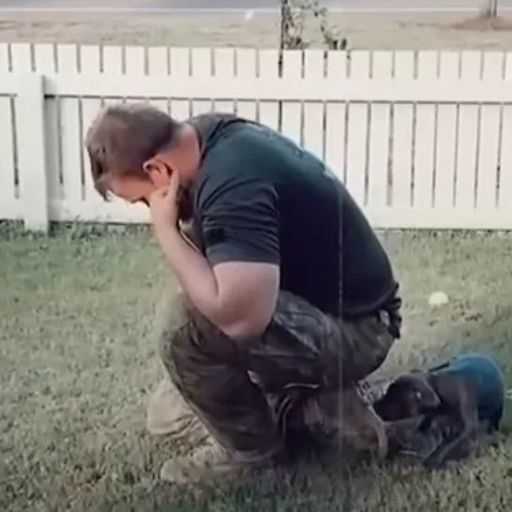
Dejected, Tubs retreated to the porch, her tail drooping. But the next morning, the same routine unfolded. This time, however, Mr. Garcia stopped. He peered over the fence, a smile crinkling the corners of his eyes. “Well, hello there, little one,” he said in a gentle voice.
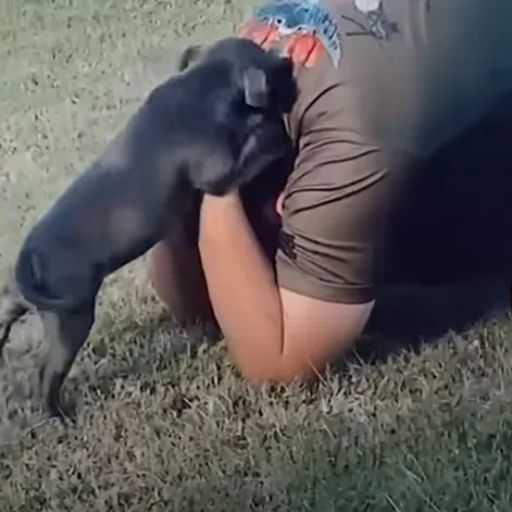
That simple acknowledgement was a revelation for Tubs. From that day on, greeting Mr. Garcia became her daily ritual. Every morning, she’d wait by the fence, her tail thumping a happy rhythm against the wooden planks. Mr. Garcia, in turn, started bringing her treats – small dog biscuits that Tubs would snatch with a delighted chomp.
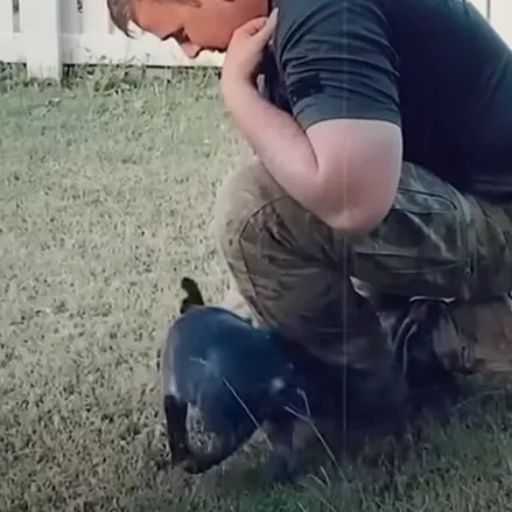
As Tubs grew, so did her audience. The neighbourhood children, initially wary of the stocky pitbull, were drawn in by her infectious enthusiasm. Soon, a small gaggle would gather by the fence each morning, giggling as Tubs showered them with sloppy kisses and playful nips.

For Emily, Tubs’ owner, watching these interactions was a source of immense joy. Emily, a shy introvert battling depression and social anxiety, had found solace in rescuing Tubs. The once-empty house was now filled with the comforting thump of a tail and the soft snores of a contented dog. Tubs, with her unwavering loyalty and boundless affection, became Emily’s constant companion, a furry shadow who seemed to sense her every mood.

One crisp autumn morning, Emily noticed a new face by the fence. It was a young woman with fiery red hair and a nervous smile. Emily, mustering all her courage, walked over and introduced herself. The woman, Sarah, confessed to being intimidated by Tubs’ size at first. But seeing her gentle interaction with the children, Sarah decided to take a chance. As Sarah cautiously reached out a hand, Tubs greeted her with a wet lick. A laugh bubbled up from Sarah’s lips, the sound echoing through the quiet street. That simple interaction, sparked by Tubs’ enthusiasm, marked the beginning of an unlikely friendship.
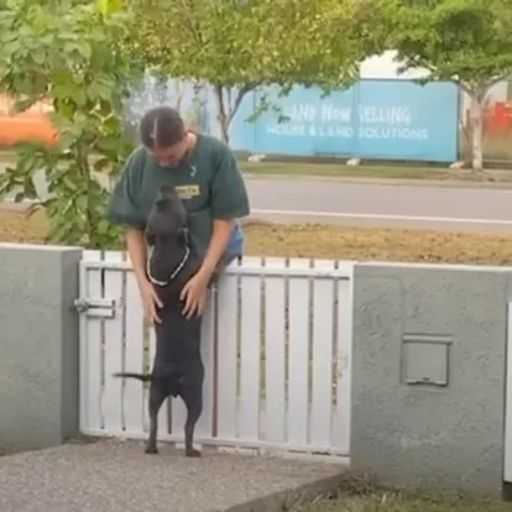
The mornings at the fence became a social hub. Mr. Garcia would regale the children with stories of his childhood dog, while Sarah, a budding photographer, started capturing Tubs’ playful antics on camera. Emily, initially hesitant, found herself drawn into the conversations, her social anxieties slowly melting away.

One day, Mr. Garcia brought over a box overflowing with colourful squeaky toys. It was a gift for Tubs, a token of appreciation for the joy she brought to their mornings. The gesture was a simple one, but it held a deeper meaning. Tubs, the once lonely puppy yearning for attention, had become the unlikely ambassador, forging connections and fostering a sense of community.
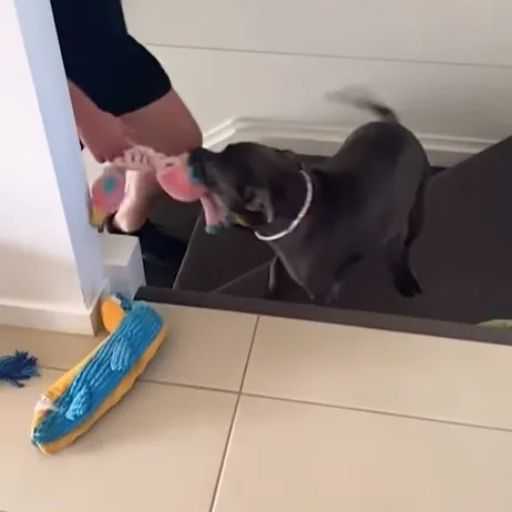
For Emily, Tubs had become more than just a pet. She was a lifeline, a furry therapist who had nudged her out of her shell and reconnected her with the world. The morning ritual at the fence wasn’t just about greeting the mailman anymore; it was a celebration of friendship, acceptance, and the unexpected ways in which a dog can change a life, one wagging tail and sloppy kiss at a time.
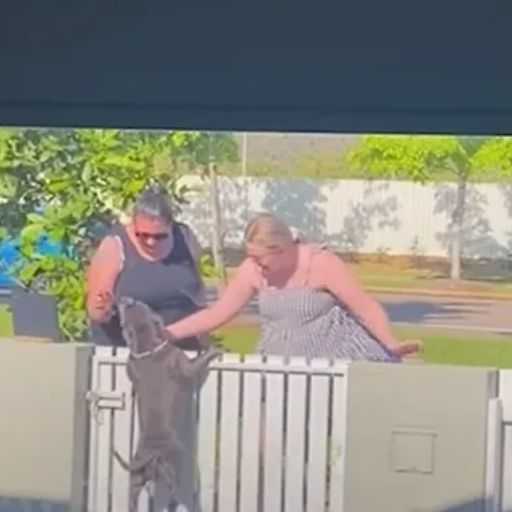
Watch The Full Video Here:
Ever noticed those tiny bumps on your male dog’s belly and wondered what they are? Nipples on male dogs might seem surprising at first glance, but they serve an interesting purpose in the canine world. As a seasoned dog enthusiast, you’re likely familiar with various quirks of our furry friends, and male nipples are no exception.
Your male dog’s nipples may not play a role in reproduction, but they are a remnant of their developmental journey. Understanding the presence of nipples in male dogs can shed light on the fascinating biological aspects of our canine companions. So, the next time you give your pup a belly rub, take a moment to ponder the intriguing nature of these seemingly insignificant features.
Understanding Canine Anatomy
Ever wondered about the unique features of your furry friend’s body? Let’s uncover the fascinating world of canine anatomy to shed light on why male dogs have nipples.
1. Biological Remnants
Male dogs, like humans, are born with nipples as a result of their fetal development. While male nipples do not serve a reproductive function, they are a residual trait from the time the embryo develops before sexual differentiation occurs.
2. Evolutionary History
The presence of nipples in male dogs is a nod to their evolutionary past. In ancestral canids, both males and females needed nipples for nursing offspring. Over time, as species evolved, male dogs retained this characteristic despite its diminished utility.
3. Hormonal Influence
Hormones play a crucial role in the development of nipples in male dogs. During early stages of fetal development, hormones like estrogen stimulate the formation of nipples. Despite not being essential for male dogs, these structures persist due to the hormonal influence during their prenatal growth.
4. Genetic Factors
Genetics also play a part in determining whether male dogs have prominent or rudimentary nipples. The genes responsible for nipple development are conserved in canines, leading to the presence of nipples in both male and female dogs.
5. Normal Variation
There can be variability in the number and appearance of nipples among male dogs. Some may have more noticeable nipples, while others may have smaller ones. This diversity is a natural occurrence and adds to the uniqueness of each dog.
Understanding the anatomy of male dogs, including the presence of nipples, provides insight into their evolutionary journey and biological makeup. Observing these features on your pet can offer a glimpse into the intricate world of canine physiology.
The Function and Purpose of Nipples in Male Dogs
Male dogs, like their female counterparts, have nipples. While male nipples may seem unnecessary, they serve a vital purpose in canine physiology. In male dogs, nipples are primarily vestigial structures from their evolutionary past and fetal development.
1. Vestigial Remnants:
Male dog nipples are remnants from when all mammals, including males, shared a common blueprint in the womb. During fetal development, nipples form before the genetic sex of the puppy is determined. This is why male dogs are left with nipples even though they serve no functional purpose in them.
2. Hormonal Influence:
Hormones play a significant role in the development of nipples in male dogs. The mammary glands, which develop the nipples, are influenced by hormonal changes during the early stages of fetal growth. These hormonal signals contribute to the formation of nipples in male dogs.
3. Potential Health Indicators:
While male dog nipples are typically non-functional, changes in their appearance could indicate underlying health issues. Any abnormalities in the nipples, such as inflammation, discharge, or lumps, should be promptly evaluated by a veterinarian. These changes could signal hormonal imbalances or other health concerns.
Understanding the presence of nipples in male dogs provides insights into their biological makeup and evolutionary history. While male nipples may not have a direct functional role, they are a fascinating reminder of the intricate genetic and evolutionary journey shared by all mammals.
Comparative Analysis: Male vs. Female Dog Nipples
Male and female dogs both have nipples; however, they serve different purposes. Here’s a breakdown of the comparative analysis between male and female dog nipples:
1. Development:
- Male dog nipples develop similarly to female dog nipples in the early stages.
- During fetal development, all dogs develop a set number of nipples, regardless of their genetic sex.
- Male dog nipples are considered vestigial structures, meaning they have no essential function in males.
2. Functionality:
- Female dog nipples are vital for nursing puppies, producing milk to feed young ones.
- Male dog nipples, although present, lack the functionality of milk production.
- Male dog nipples are non-functional remnants from evolution.
3. Health Indicators:
- Changes in male dog nipples can sometimes indicate health issues.
- Swelling, discharge, or abnormalities in male dog nipples may signal underlying medical conditions.
- Any unusual changes in male dog nipples should prompt a visit to the veterinarian for evaluation.
- Hormonal changes can affect the appearance and condition of male dog nipples.
- Hormonal imbalances might lead to nipple abnormalities in male dogs.
- Monitoring these changes can help in detecting potential health problems early on.
Understanding the key differences between male and female dog nipples can provide insights into the distinct biological roles they play in canines. It also underscores the fascinating evolutionary journey that has led to these anatomical variations among dogs.
Debunking Common Myths About Male Dog Nipples
Let’s set the record straight about male dog nipples. Despite what some may think, male dogs do indeed have nipples. These nipples, although present, serve no functional purpose in male dogs. Unlike female dog nipples that are essential for nursing puppies, male dog nipples are simply a remnant of fetal development.
Male dog nipples are not a cause for alarm. They are a normal part of a male dog’s anatomy and do not indicate any health issues on their own. Changes in the appearance of male dog nipples should, however, be monitored. Any significant changes, such as swelling, discharge, or inflammation, could signal an underlying health concern that warrants a visit to the vet.
Understanding the presence of nipples in male dogs helps us appreciate the complexities of canine anatomy and evolution. It showcases the fascinating journey of biological development that has resulted in these unique anatomical features in male dogs. So, rest assured, those little dots on your male dog are just a harmless reminder of their developmental past.
Conclusion
Male dogs having nipples may seem surprising, but it’s a normal part of their anatomy. While these nipples may not serve a functional purpose like in female dogs, they are a fascinating reminder of evolutionary history. Keeping an eye on any changes in your male dog’s nipples is essential for their health. Remember, a visit to the vet is always a good idea if you notice anything unusual. Understanding the presence of nipples in male dogs provides insight into their biology and the intricate journey of evolution that has shaped them. Embrace these quirks of nature in your furry companion!
Frequently Asked Questions
Do male dogs have nipples?
Yes, male dogs do have nipples. However, unlike female dog nipples with a functional purpose for nursing puppies, male dog nipples are vestigial and lack a specific role.
Should I be concerned if my male dog has nipples?
Having nipples is normal for male dogs and is not a cause for concern. However, any changes like swelling or discharge should be monitored as they could indicate underlying health issues that require veterinary attention.
Why do male dogs have nipples if they serve no purpose?
Male dog nipples are a remnant of evolutionary history and fetal development. They exist due to shared genetic traits with female dogs, reflecting the intricate biological journey of canine anatomy and evolution.

Hey there, I’m Janet Brooks, a dog-loving student from California. I’m all about helping pups in need, especially those without homes. Me and my awesome friends work together to give shelter and love to stray dogs. Oh, and I also write blogs about dogs to share helpful info.